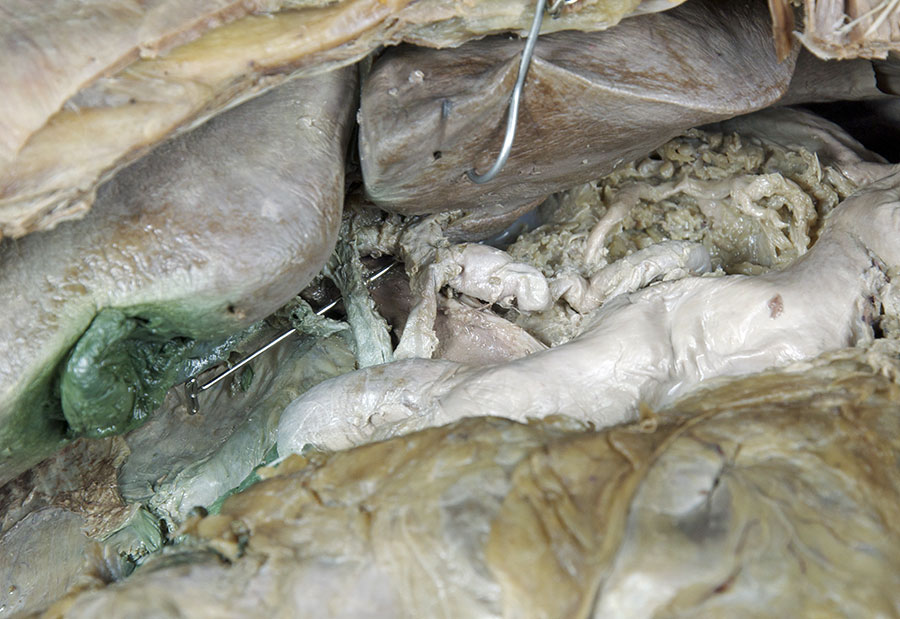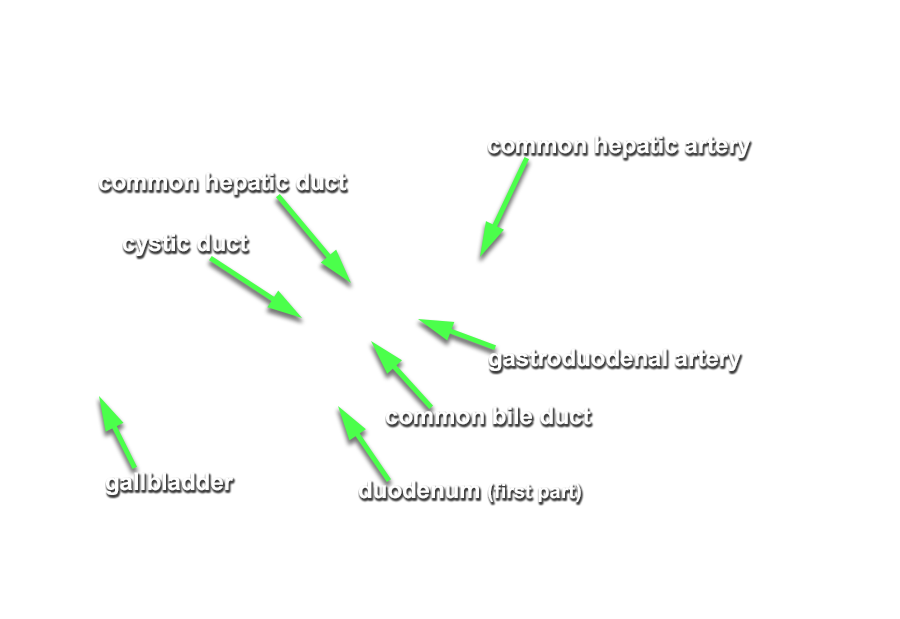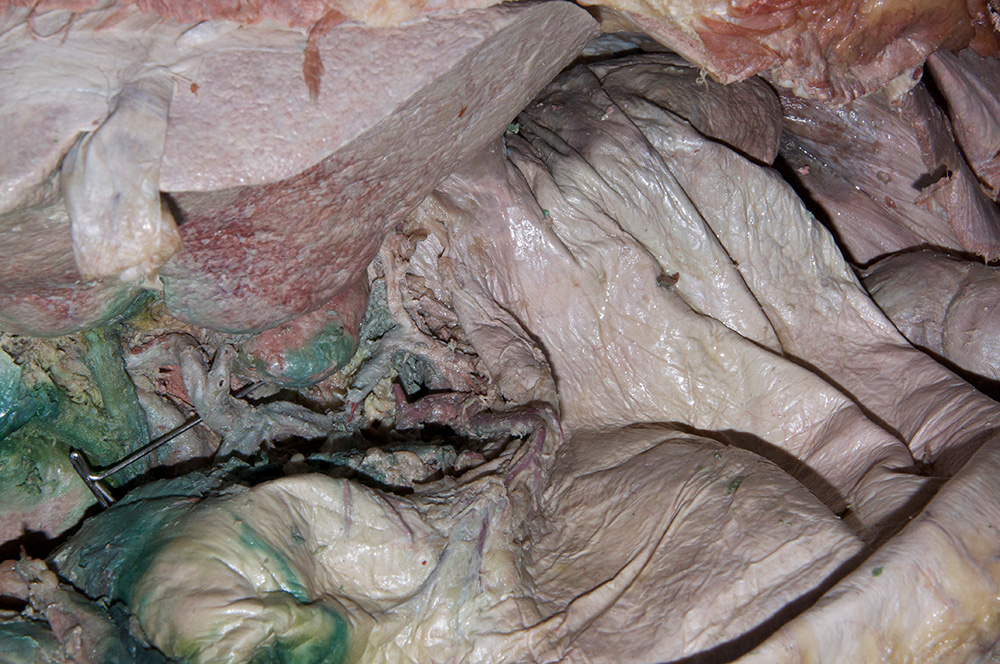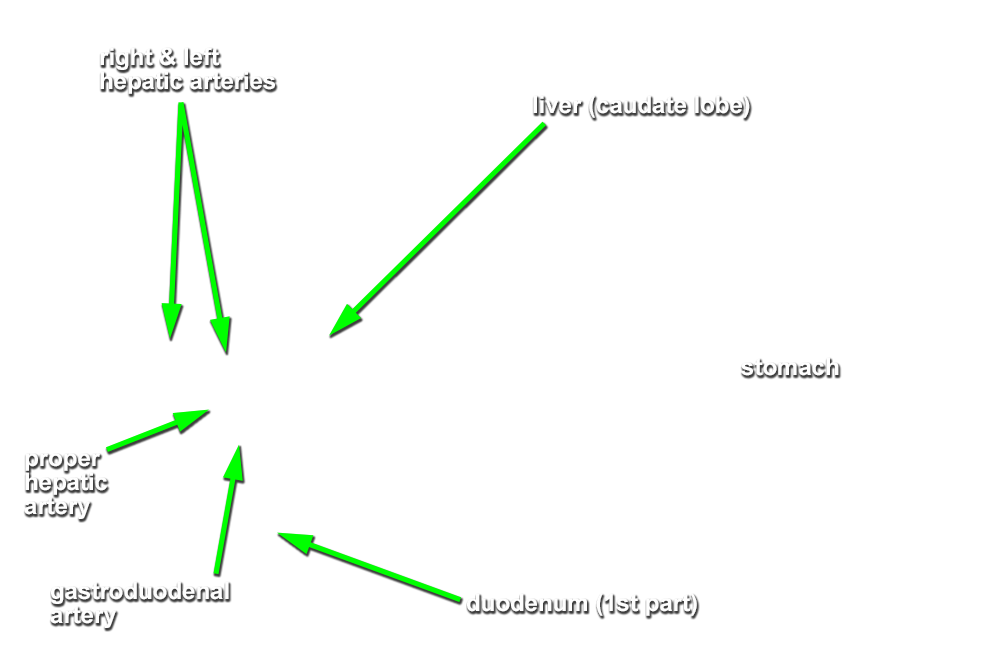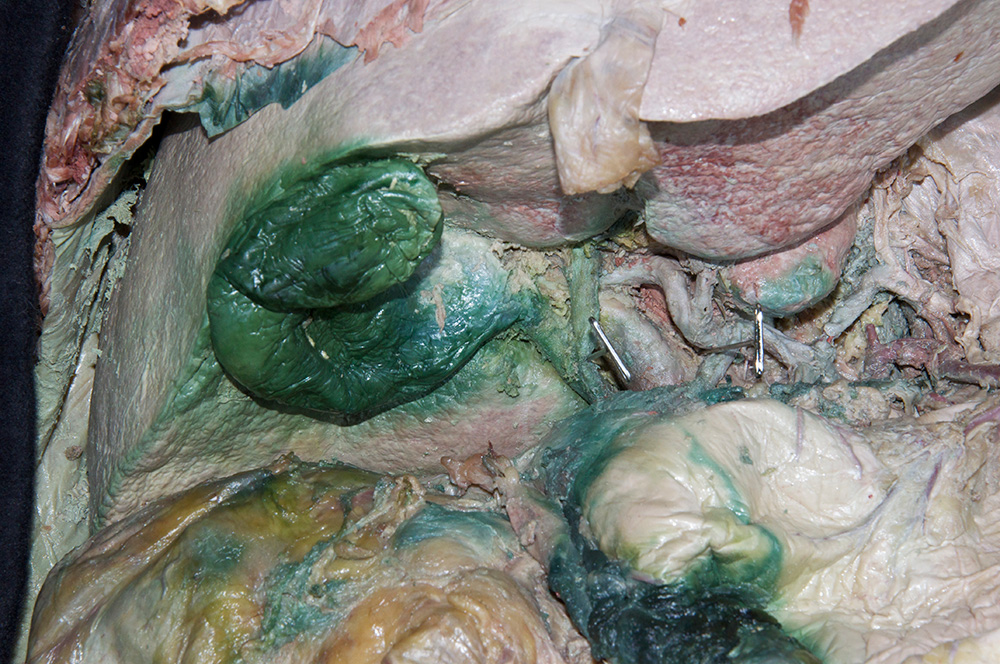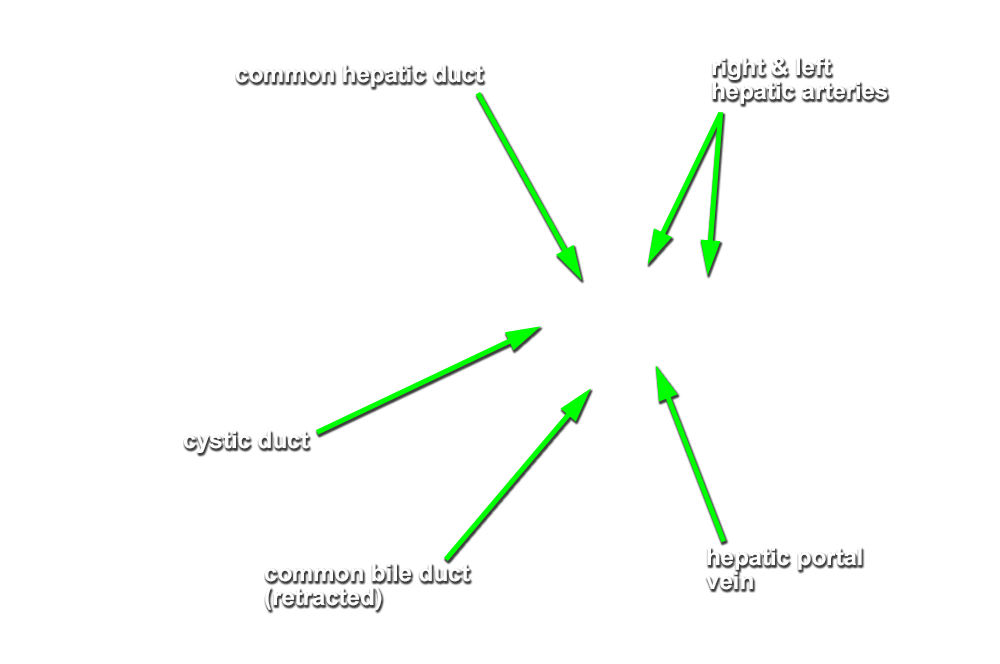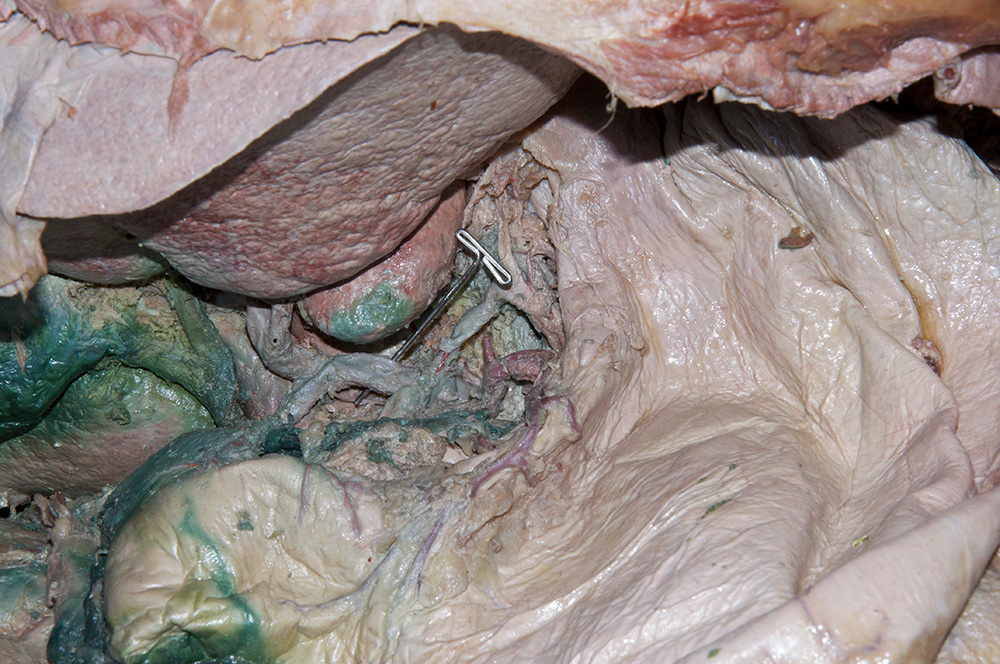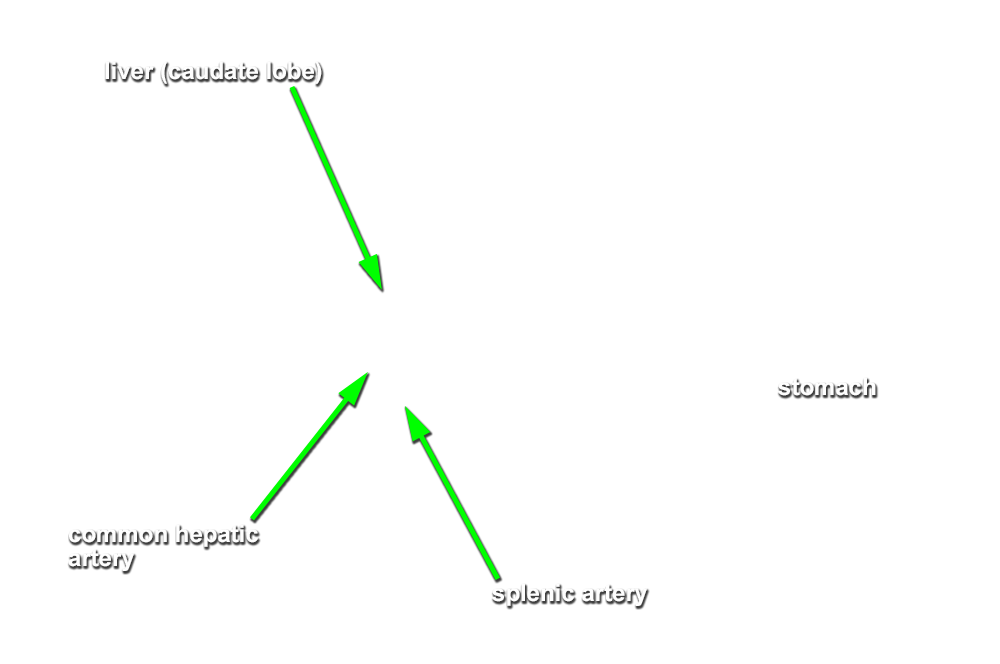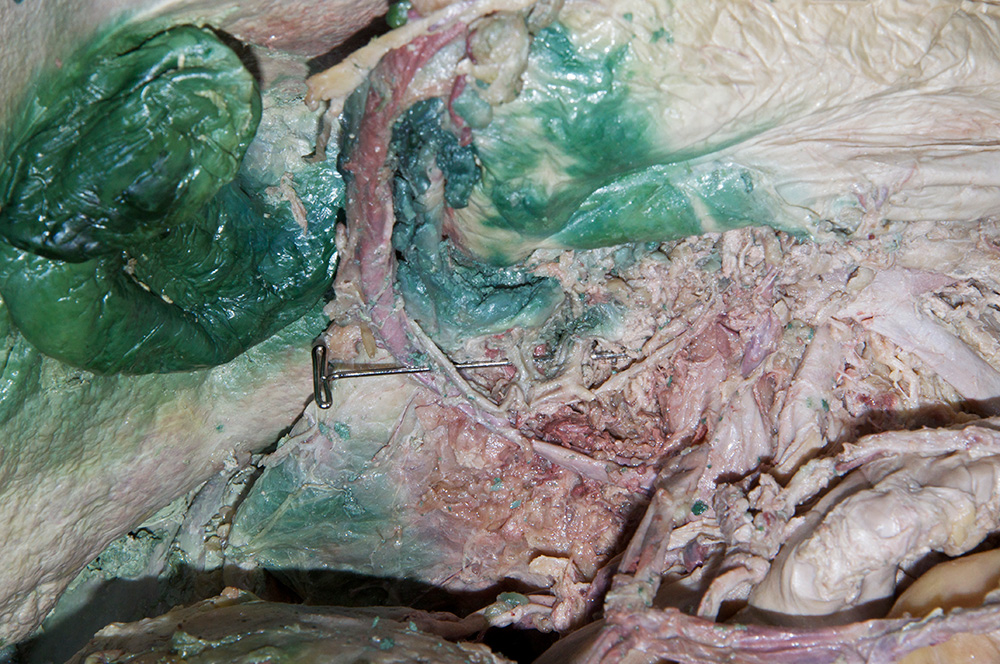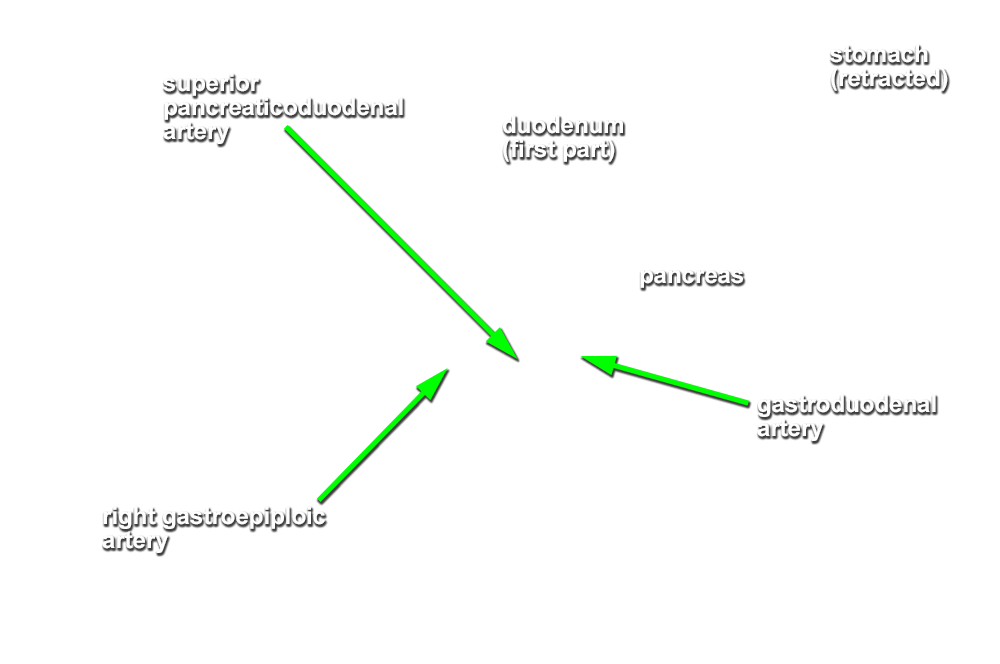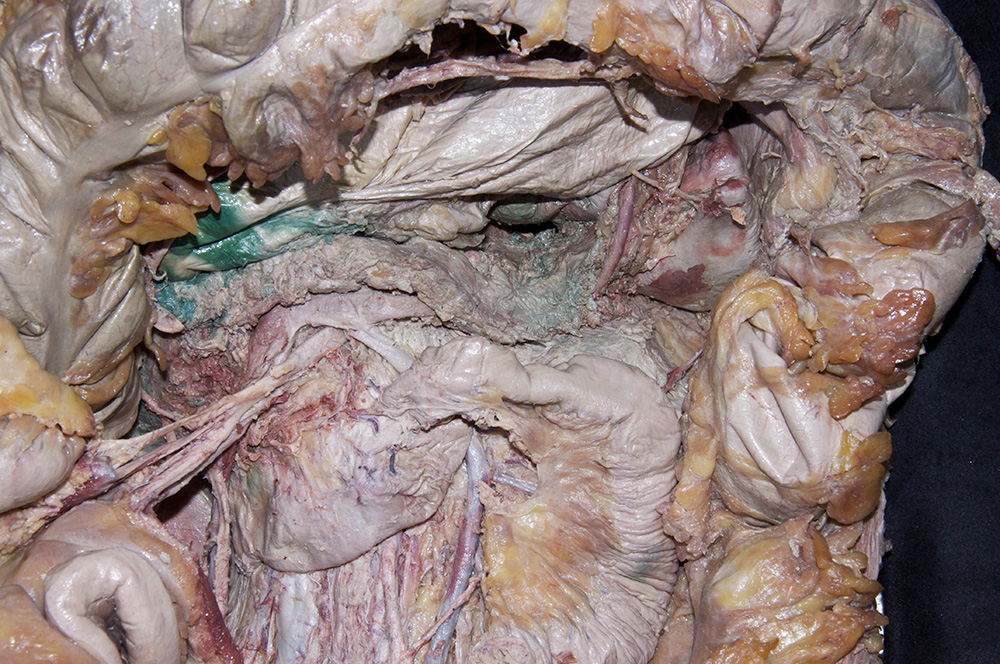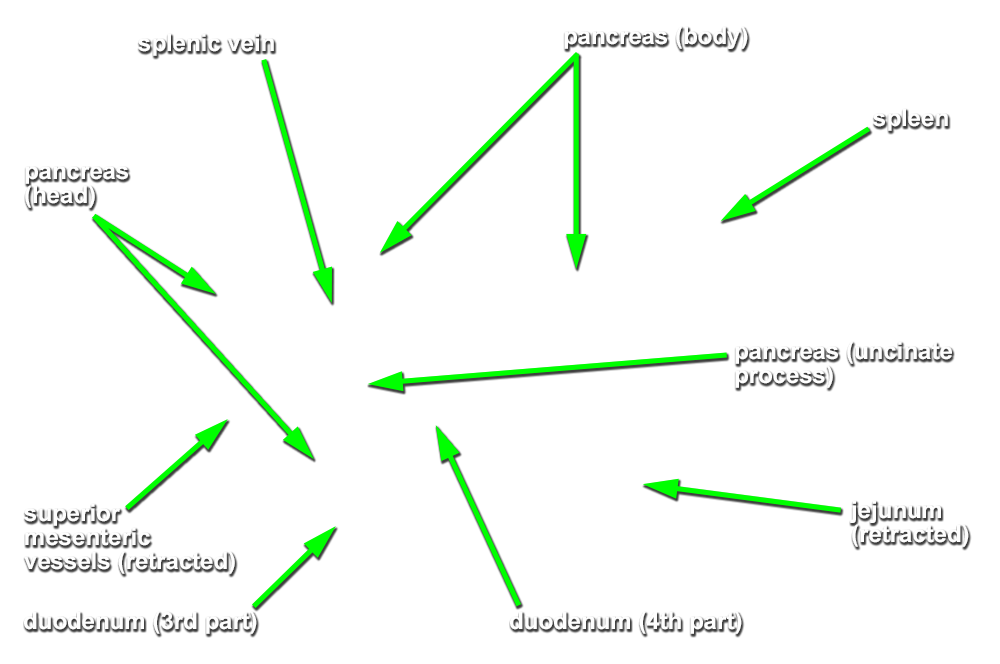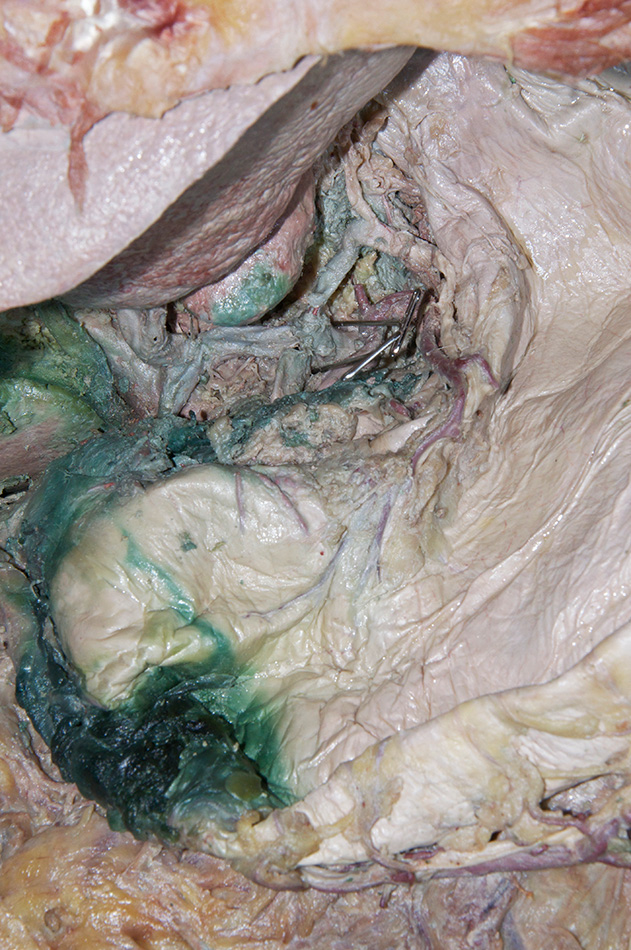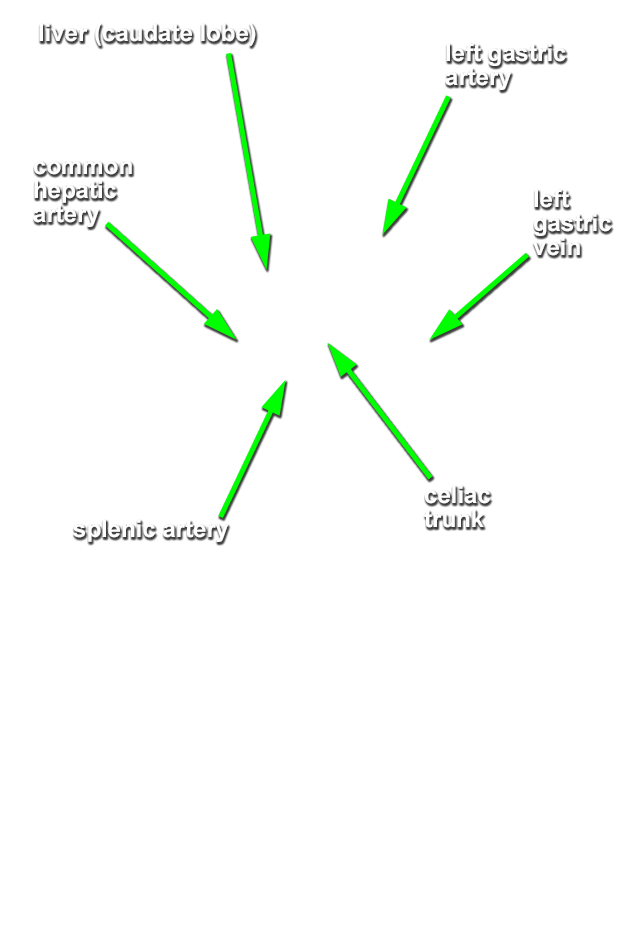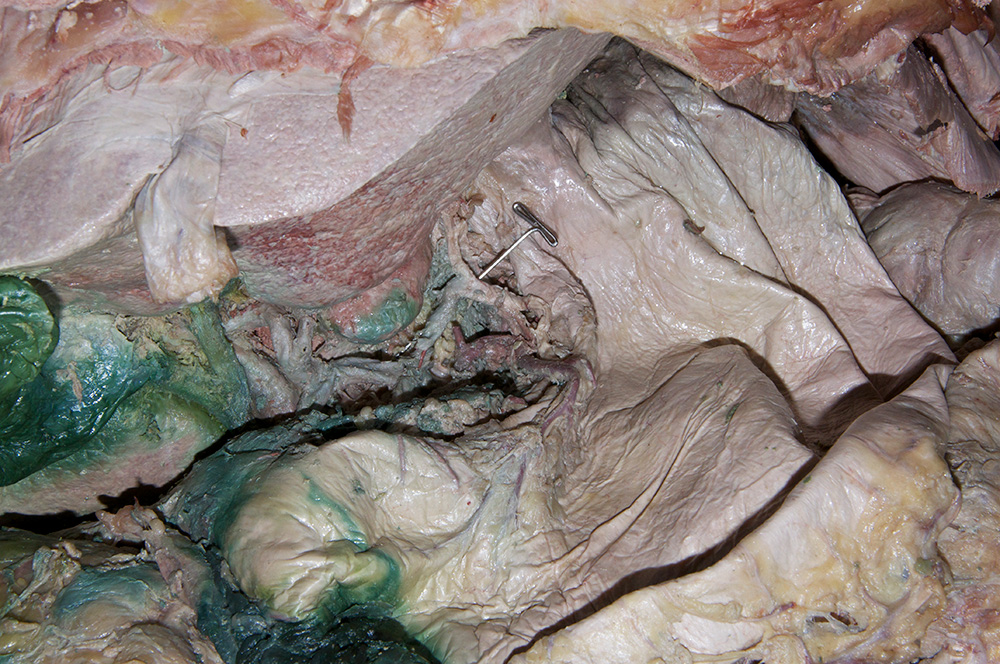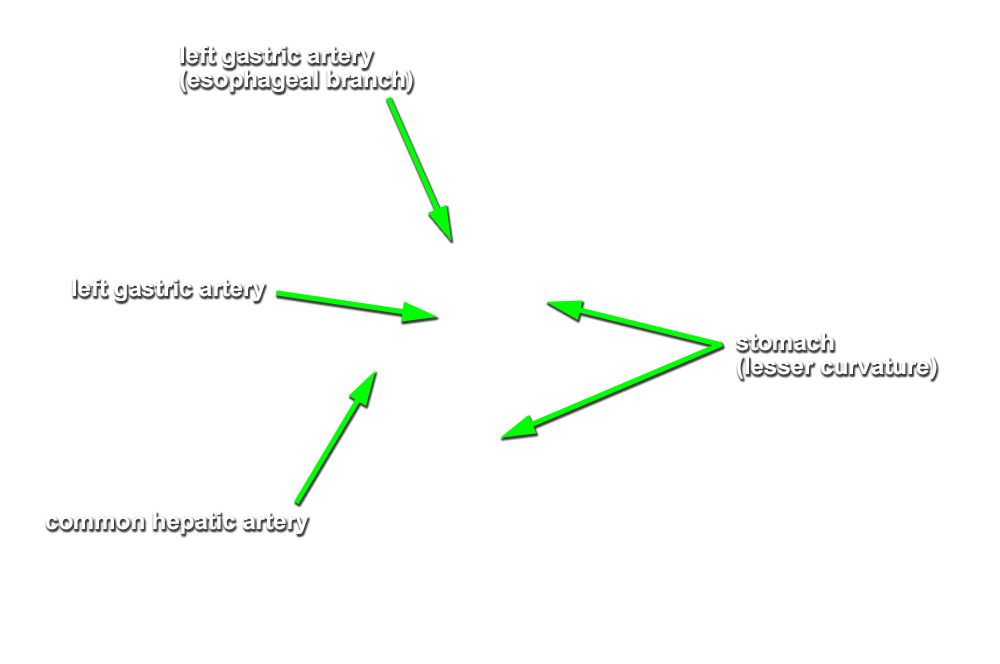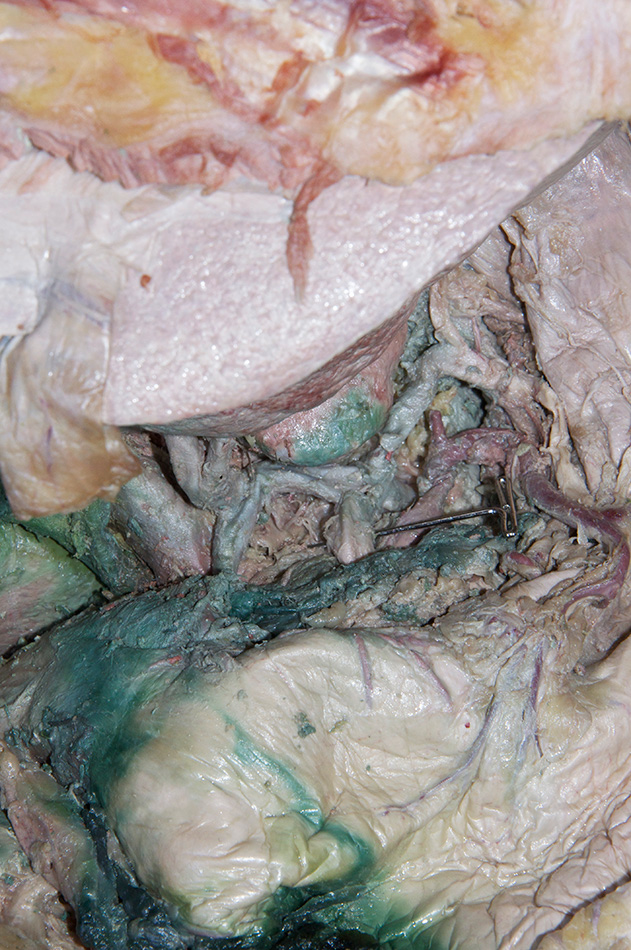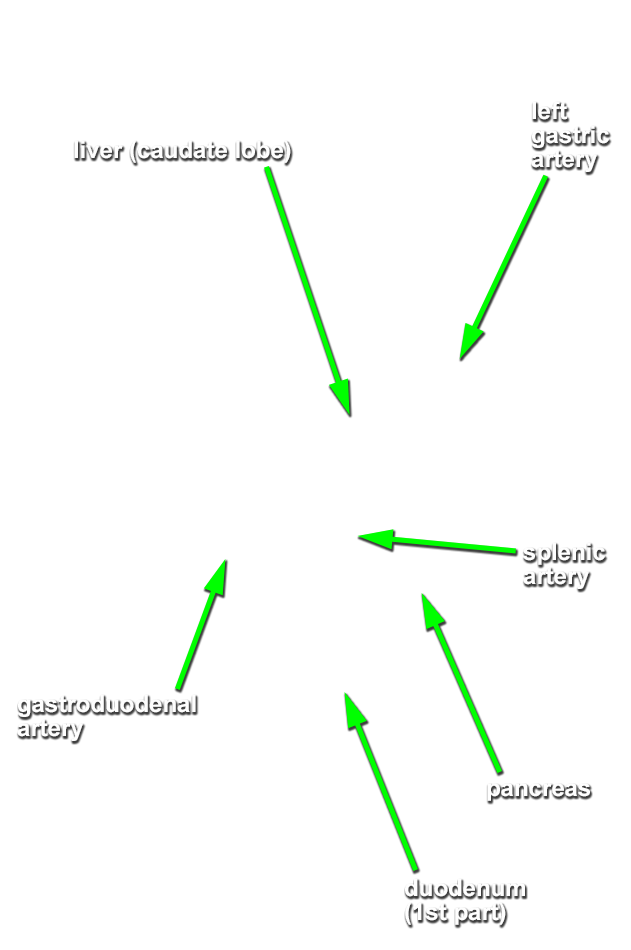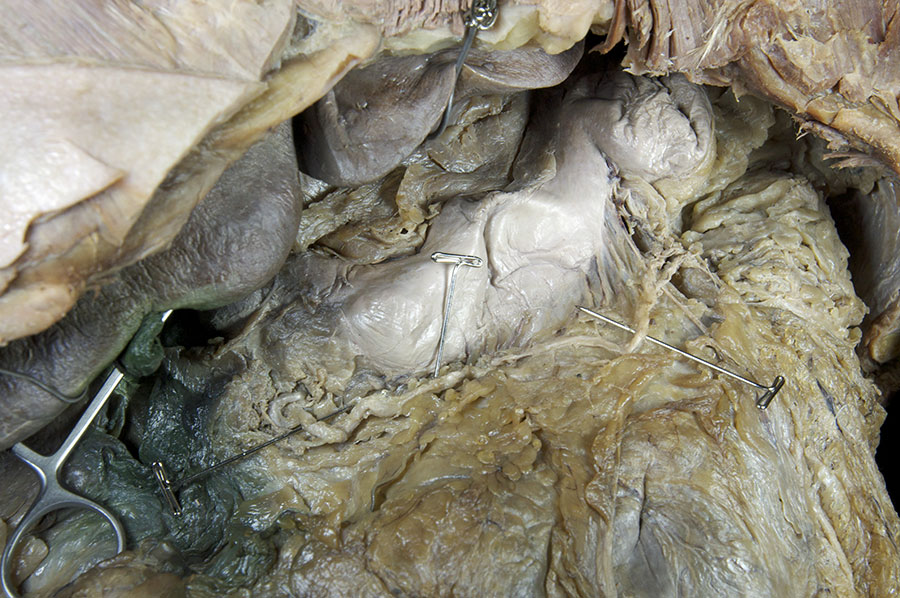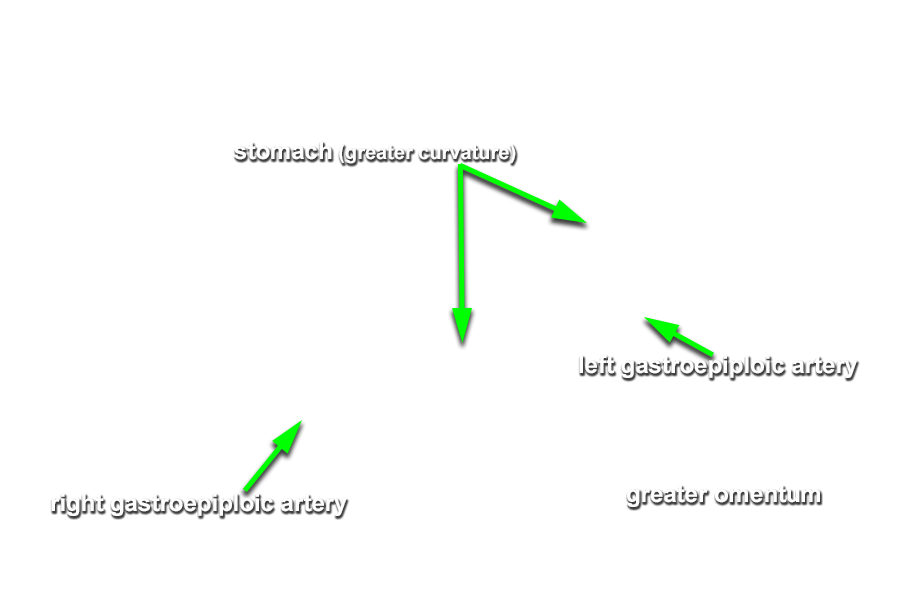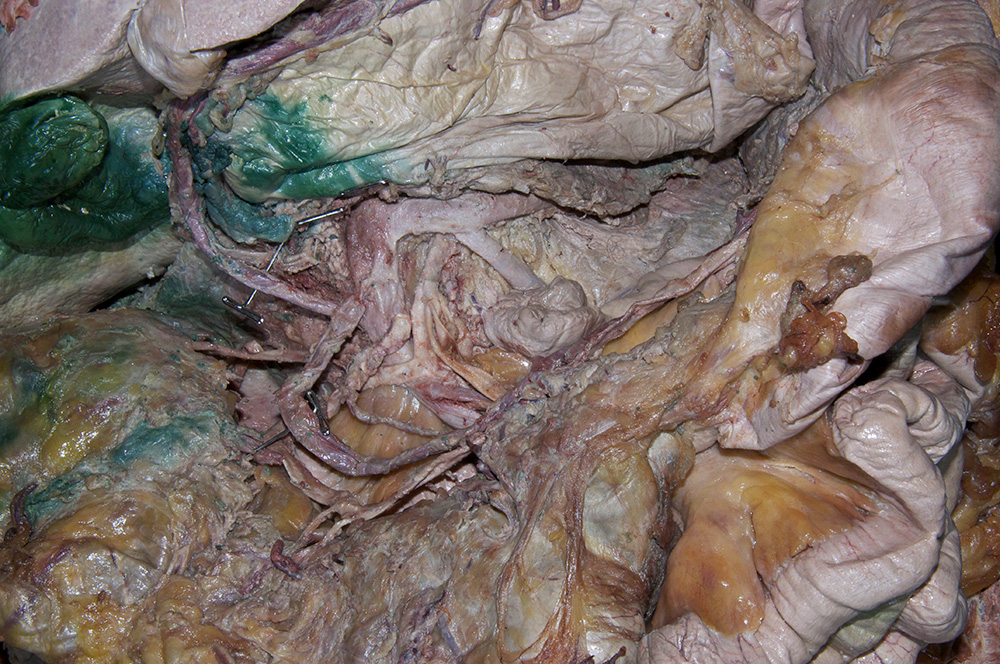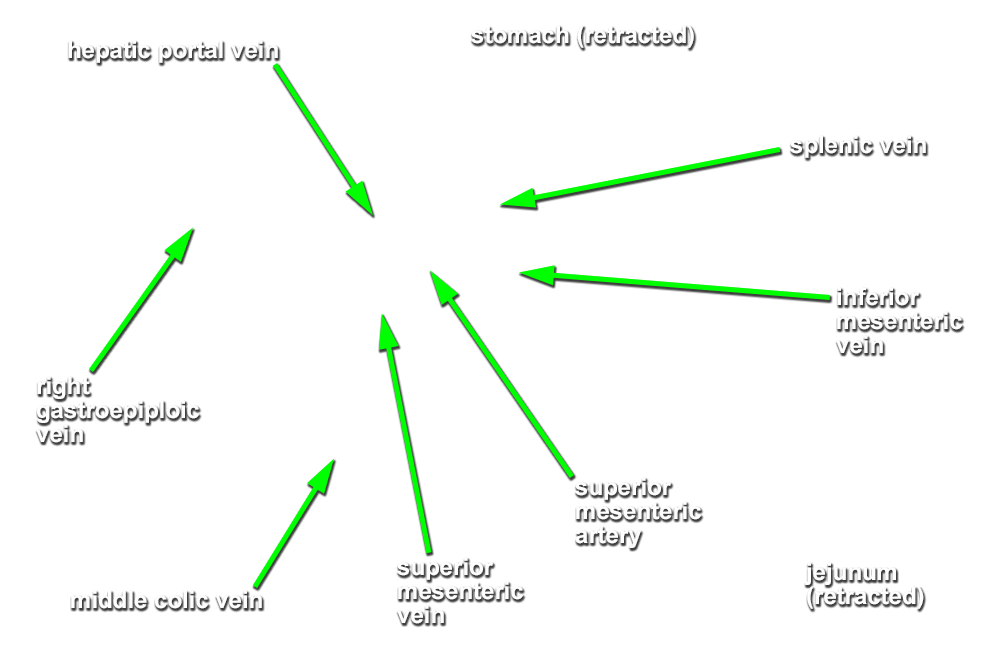Return to the lesser omentum and identify the structures associated with the omental bursa (lesser sac of the peritoneal cavity).
- Identify the green bile duct. (G 4.56;N 280;Gl 15.28) Trace the bile duct towards the liver and gall bladder and identify the cystic duct and the common hepatic duct. Next trace the bile duct in the inferior direction to the 2nd part (descending) of the duodenum. Identify and clean the proper hepatic artery (G 4.58;N 284;Gl 15.28) and its two branches (right and left hepatic). Attempt to identify the cystic artery. Identify the hepatic portal vein. (G 4.57A;N 284;Gl 16.9) It is the largest and most posteriorly positioned structure in the free margin of the lesser omentum.
- Trace the proper hepatic artery to the left towards the aorta. Identify the common hepatic and gastroduodenal arteries. (G 4.33;N 283;Gl 16.9) Attempt to identify the right gastric artery. Attempt to trace the right gastric artery to the lesser curvature of the stomach adjacent to the pylorus. Trace the gastroduodenal artery posterior to the 1st part of the duodenum (you may need to fold the stomach in the superior direction) and identify its two terminal branches, the superior pancreaticoduodenal and right gastroepiploic arteries. (G 4.39;N 283 and 284;Gl 16.10) Identify the head of the pancreas and 3rd and 4th parts of the duodenum. (G 4.38;N 281;Gl 15.32) Trace the right gastroepiploic artery to the greater curvature of the stomach.
- Trace the common hepatic artery to the celiac trunk. (G 4.33;N 284;Gl 16.40) Identify the left gastric artery. Trace the left gastric artery to the lesser curvature of the stomach adjacent to the esophagus. Look for an anastomosis between the right and left gastric arteries. Identify the splenic artery. (G 4.33;N 284;Gl 16.19) Trace the splenic artery to the spleen. It follows the body and tail of the pancreas. (G 4.39;N 284;Gl 16.10) Identify the left gastroepiploic artery and trace it to the greater curvature of the stomach. Attempt to identify the anastomosis between the right and left gastroepiploic arteries. Attempt to identify the short gastric arteries passing from the splenic artery to the fundus of the stomach. (G 4.39;N 284;Gl 16.10)
- Identify the two primary tributaries of the hepatic portal vein, the superior mesenteric and splenic veins. (G 4.65;N 289;Gl 16.20) Attempt to identify the right and left gastric veins. Trace the splenic vein to the spleen.
Important Relationships
- The common bile duct passes posterior to the duodenum (first segment) and anterior to the epiploic foramen.
- The hepatic portal vein passes anterior to the epiploic foramen, and in the lesser omentum (hepatoduodenal ligament), it is typically positioned posterior to the bile duct and the hepatic artery proper.
- The hepatic artery proper passes anterior to the epiploic foramen.
- The gastroduodenal artery passes posterior to the duodenum (first segment) and anterior to the pancreas.
- The duodenum (second segment) is positioned directly lateral (to the right) of the pancreas (head).
- The duodenum (3rd segment) is positioned directly inferior to the pancreas (head) and passes anterior to both the inferior vena cava and the abdominal aorta.
- The splenic artery and vein pass posterior to the stomach (fundus) and are typically positioned posterior - superior to the pancreas (body and tail).
